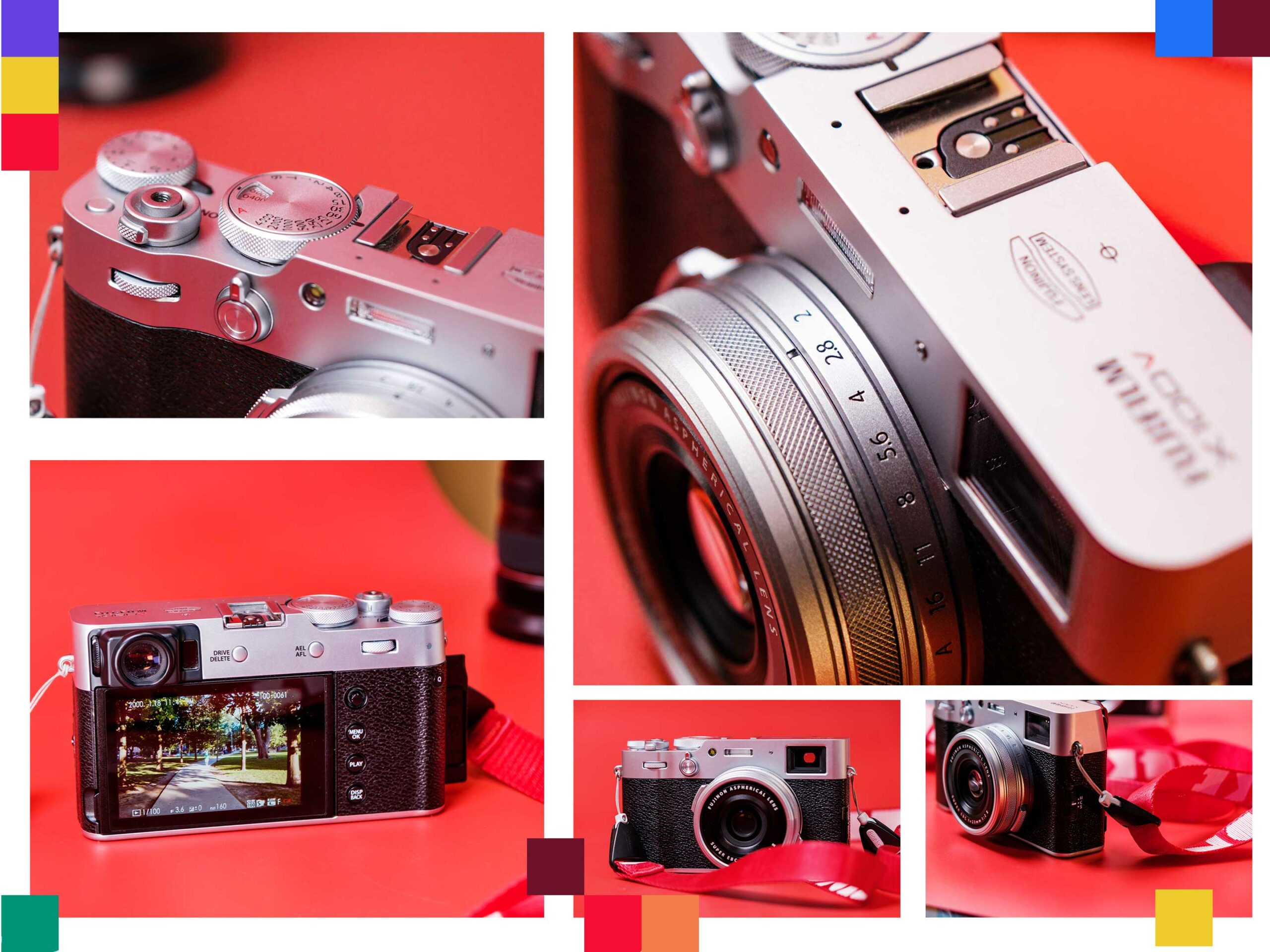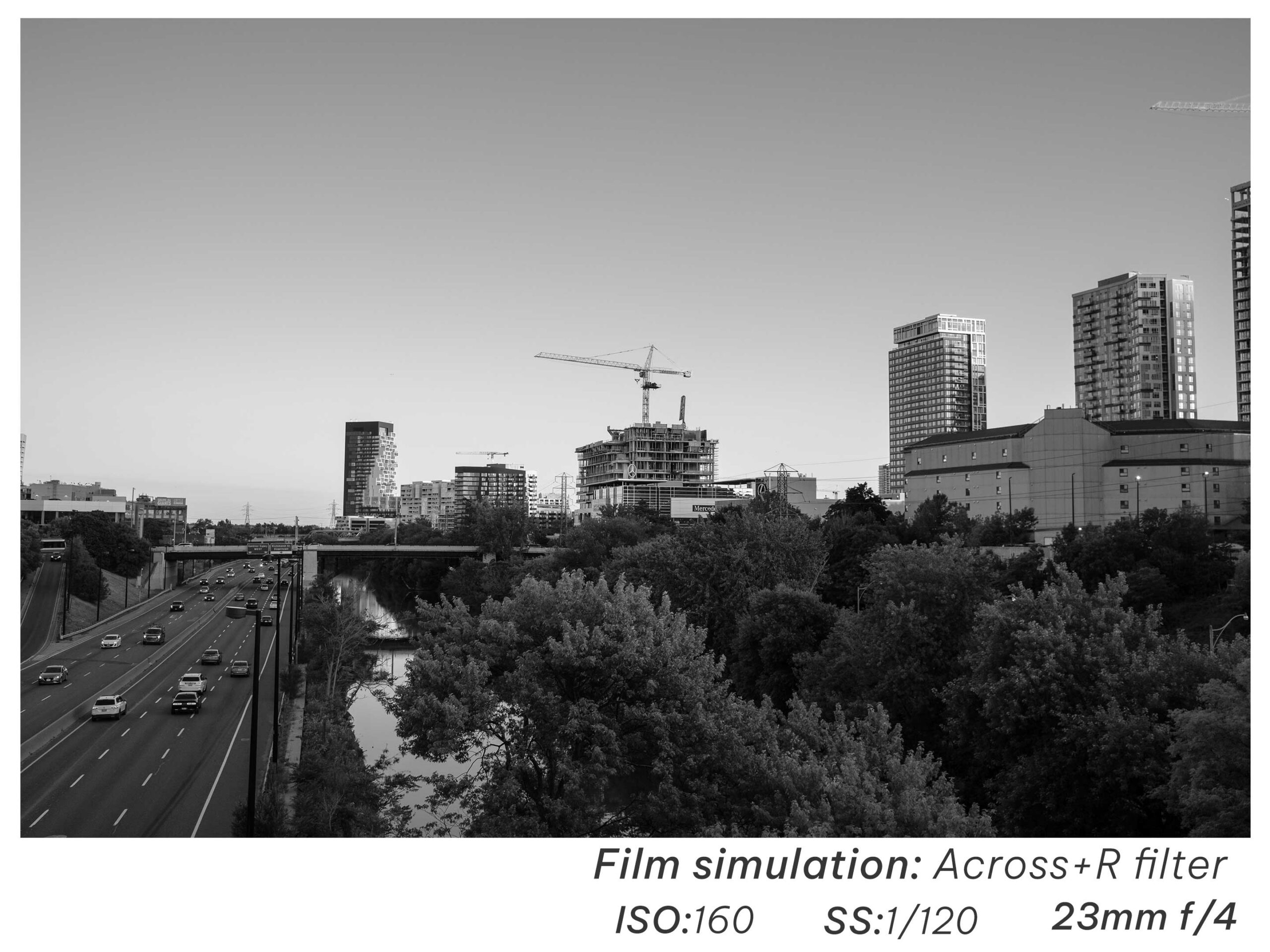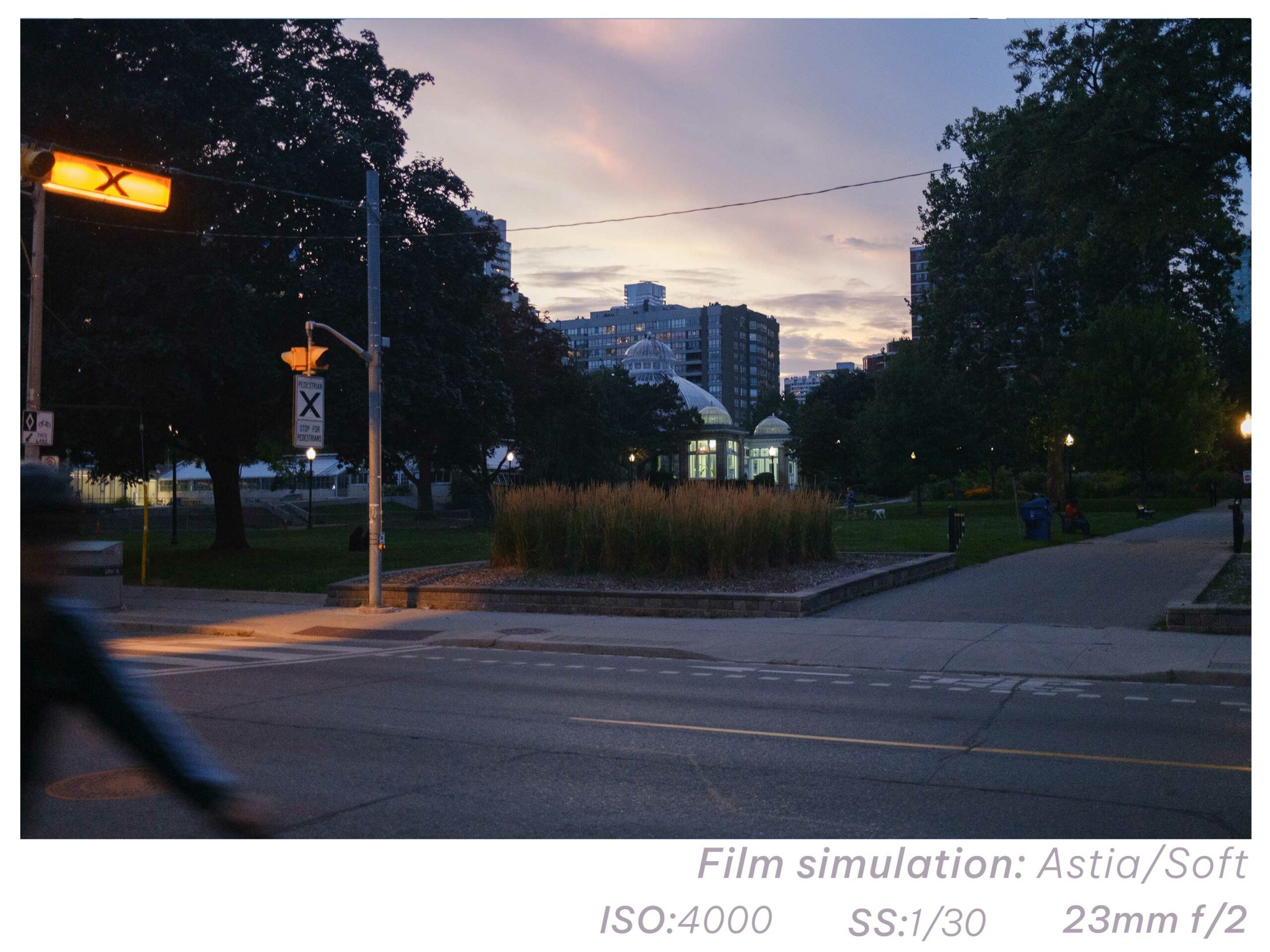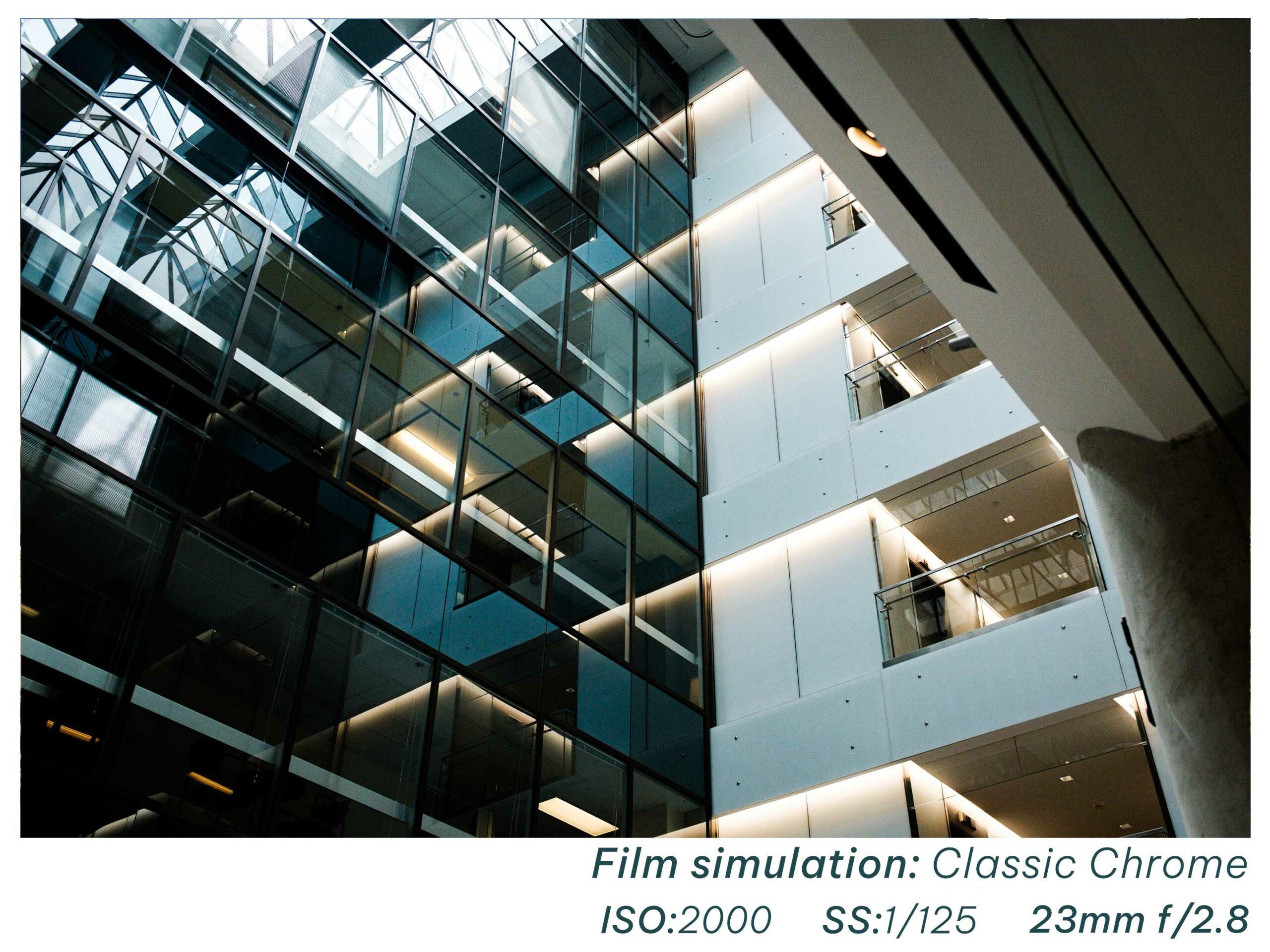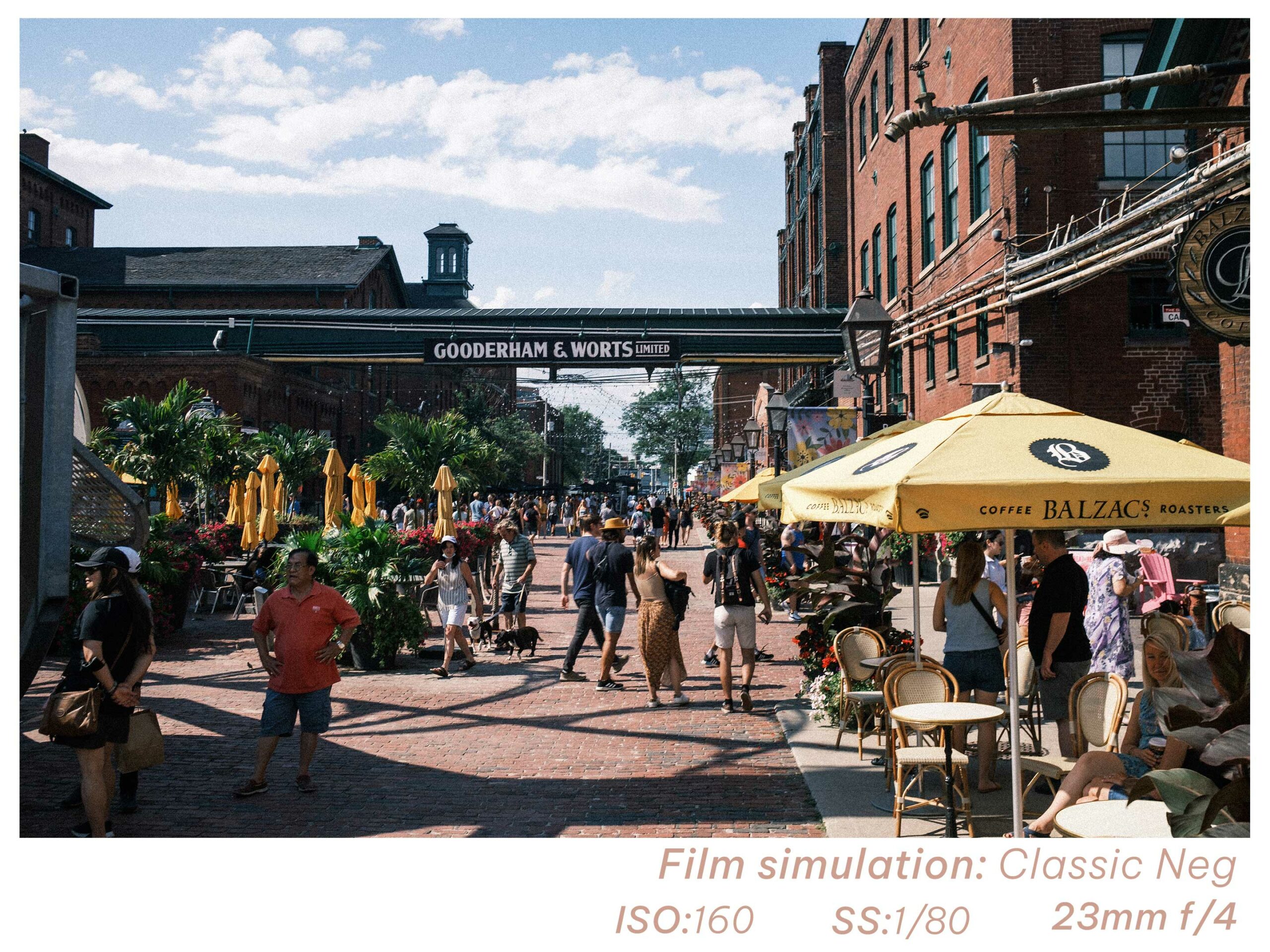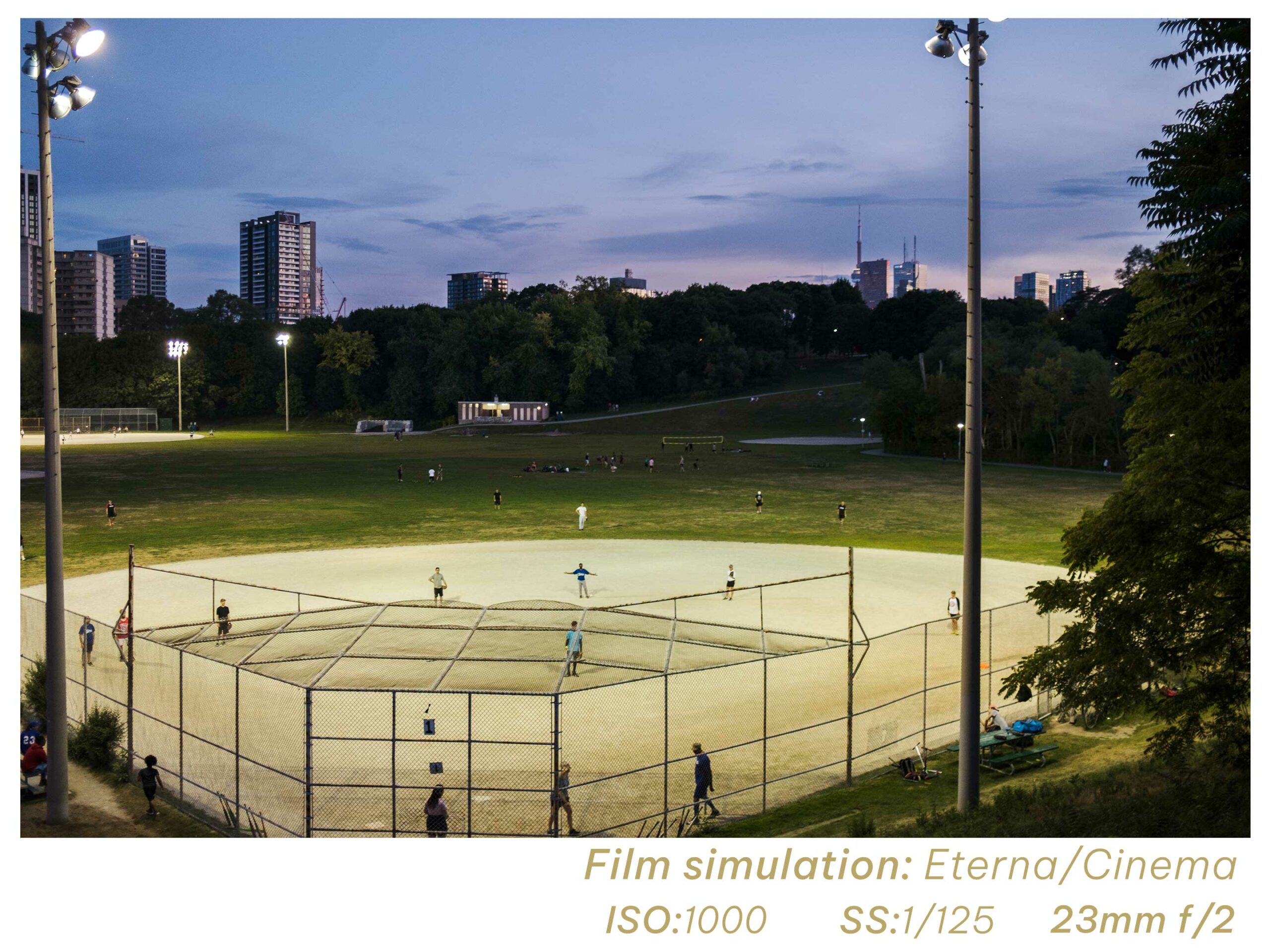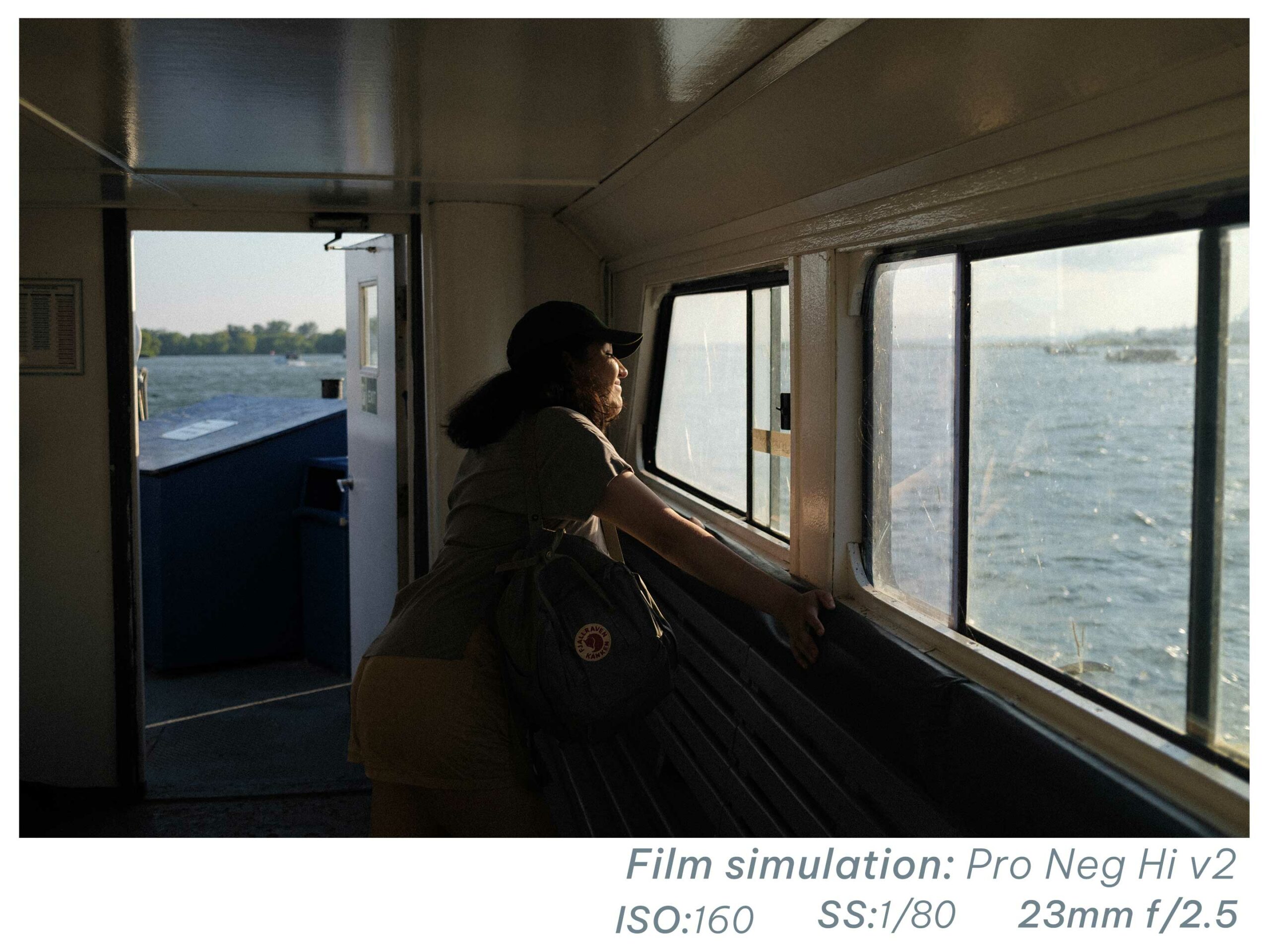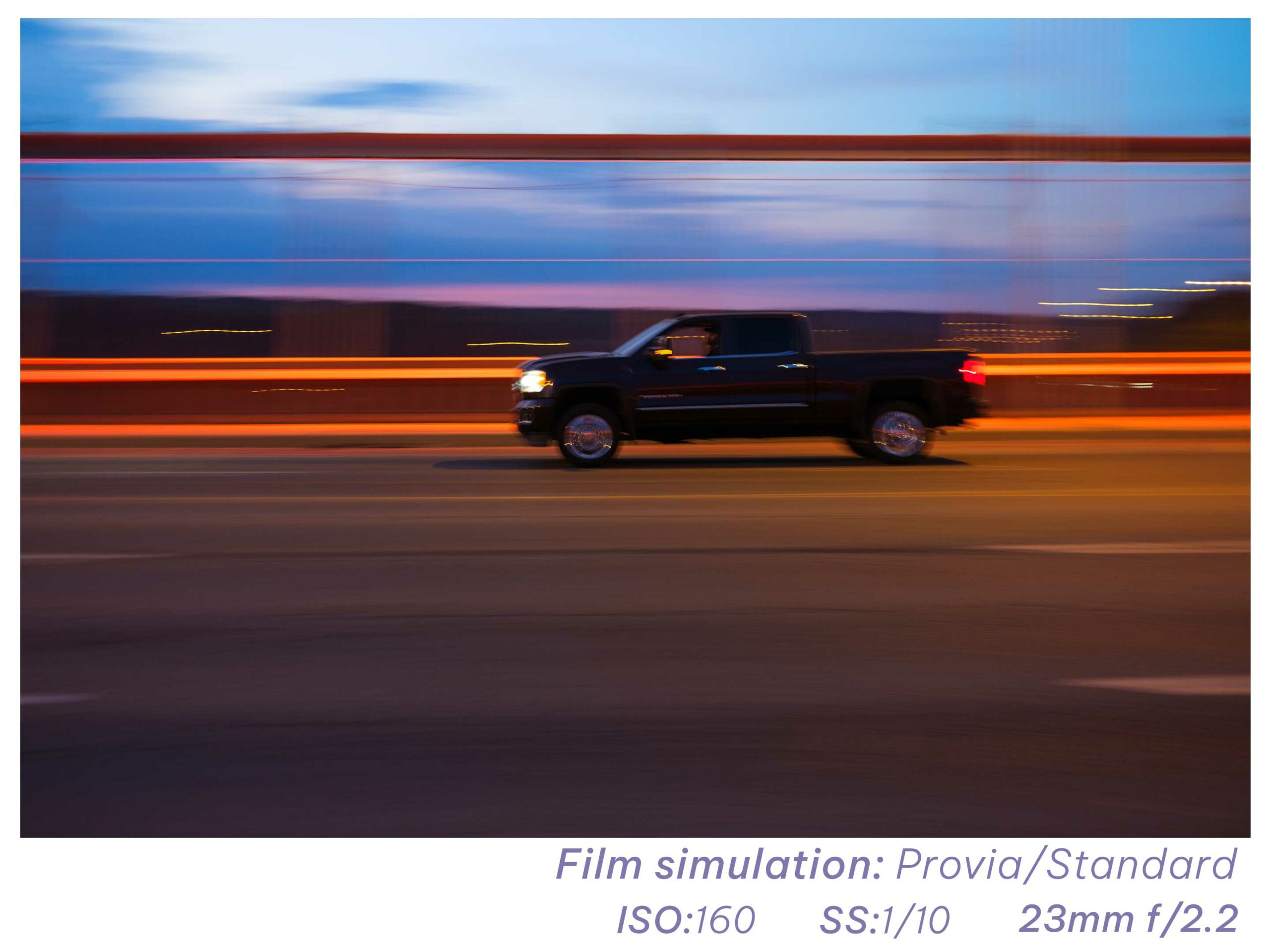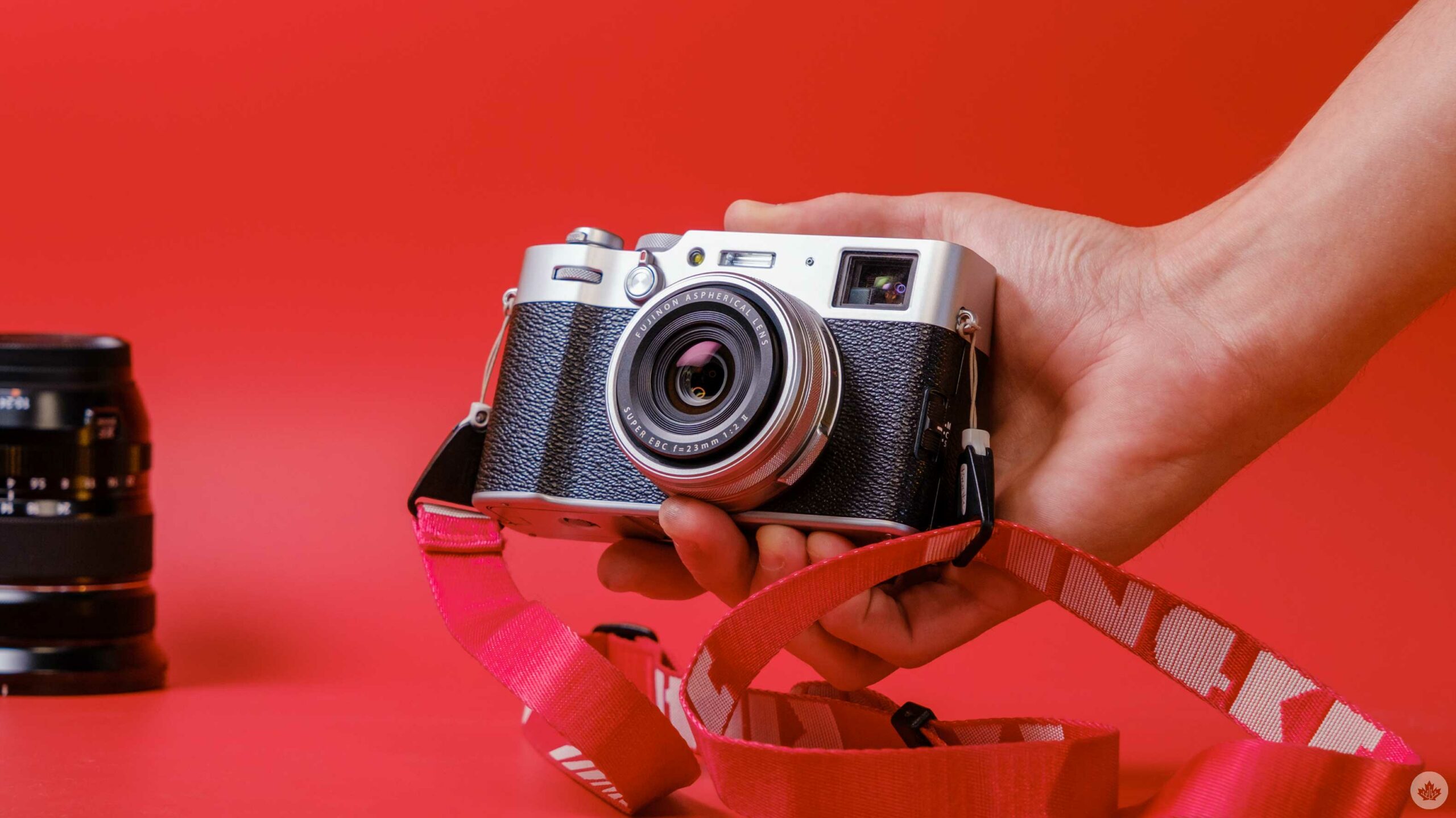
The Pros
- Amazing build quality
- Great sensor + lens combo
- Compact and portable
The Cons
- Not many shortcut buttons
- Very expensive
- Not fully weatherproof
I’ve been a fan of photography ever since the iPhone 6S.
However, I used to believe I shouldn’t get a real camera until I mastered mobile photography. I was wrong, and the X100V proves that more than ever. The compact Fujifilm mirrorless camera sits smartly between phones and big interchangeable lens cameras, and it’s shown me how amazing it can always be to have a real camera at your side.
The X100V is a flagship camera of sorts. It might not be packed with the most cutting-edge camera tech compared to newer Fujifilm cameras like the XH2S, but its small size comes with its own design limitations and perks that make it the perfect photography partner.
The sensor is the same as other Fujifilm top-of-the-line APSC cameras, and the lens is an exquisite f/2 23mm pancake style lens that’s incredibly sharp. It’s a 35mm equivalent fixed lens and a lot of fun to use.
That’s the story of the entire camera. It’s probably the most fun I’ve ever had with a camera, from taking photos to editing the rich RAW files.
Designed with precision
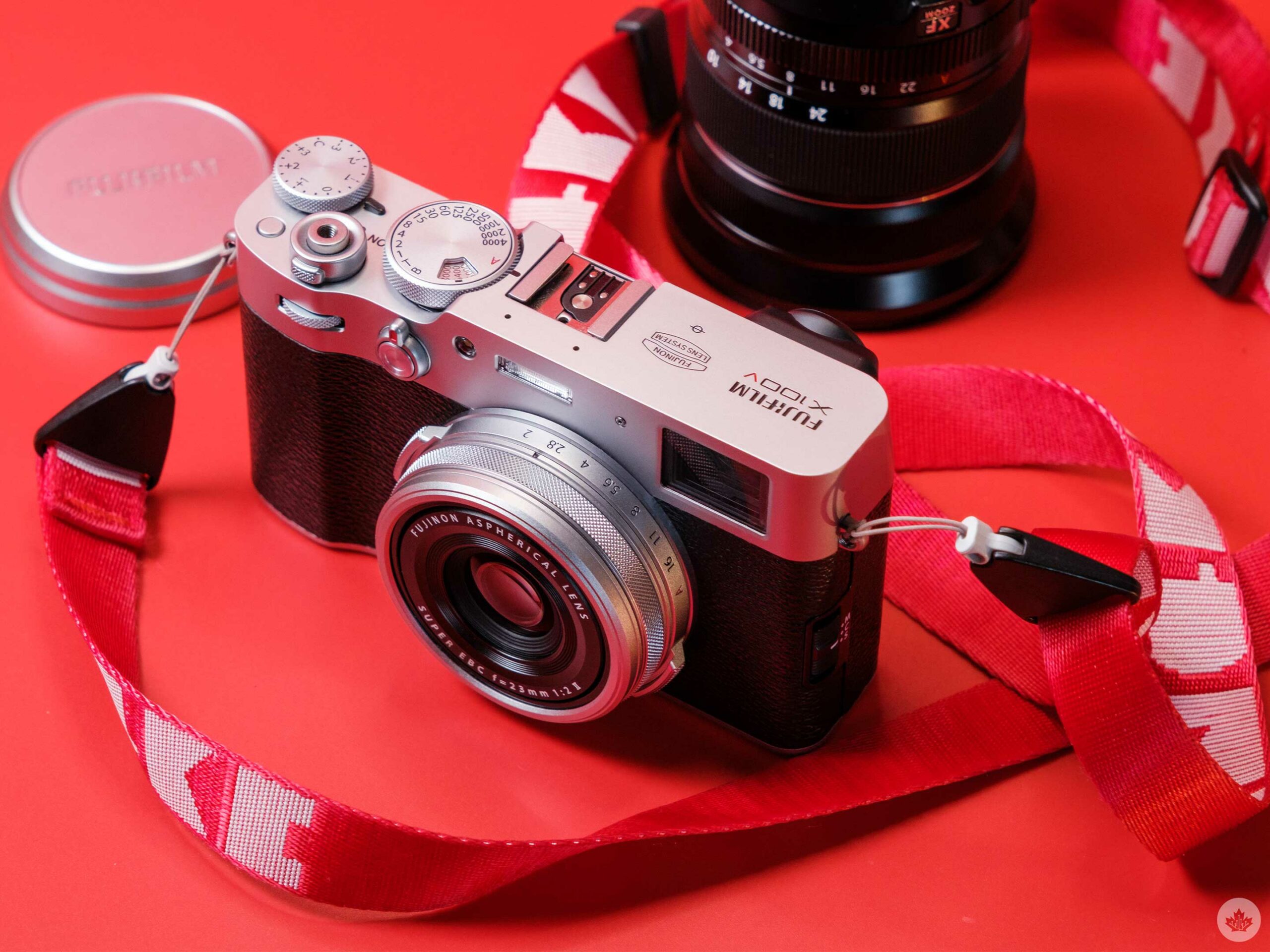
One of the most noticeable things about the X100V is that it looks like a film camera. Since the camera is so compact, I found myself wearing it on a strap pretty much all the time and people loved to comment on it.
The top of the camera sports great retro-inspired dials, and the aperture ring’s click is solid. There’s even a viewfinder that can be retro, a hybrid option or fully digital. It’s fun to use and helps the camera feel premium beyond just being made of metal. Other notable perks include a nice screen, a built-in ND filter and a built-in fill flash.
Overall, the X100V is a great camera package, but the most critical aspect is its portability. I’ve been carrying Fujifilm cameras like the X-T3 and the X-S10 for a few years, but I’ve never felt I should take them everywhere since they’re so big. The X100V changes that since it has the same power, but I can carry it around, and it’s fantastic.
Throughout my life, I often have moments where I see something that will be a great shot, but I can’t take a photo that I’ll like on a phone. With the X100V, I have a much better chance of getting the picture I want, and it’s truly amazing to have this much power at all times.
“…at the end of the day, the best camera is the one you have with you.”
That’s not to say that the camera is perfect. Compared to its predecessor, the X100V doesn’t have a D-pad, which is annoying. It doesn’t break the experience, but it would have been nice to have a few more shortcuts. The little joystick is fine, but I found that when I would have the camera dangling around my neck, I would often bump the joystick, causing the focus square to move down. Then the next time I would lift the camera, I’d miss my shot.
Another quirk that annoys me is that Fujifilm weatherproofed the X100V’s body, but not the lens. To fully weatherproof the system, you need to buy a filter ring adapter and a filter, which is a bit annoying considering every other aspect of the camera seems primed to go anywhere… unless it’s raining.
Camera samples
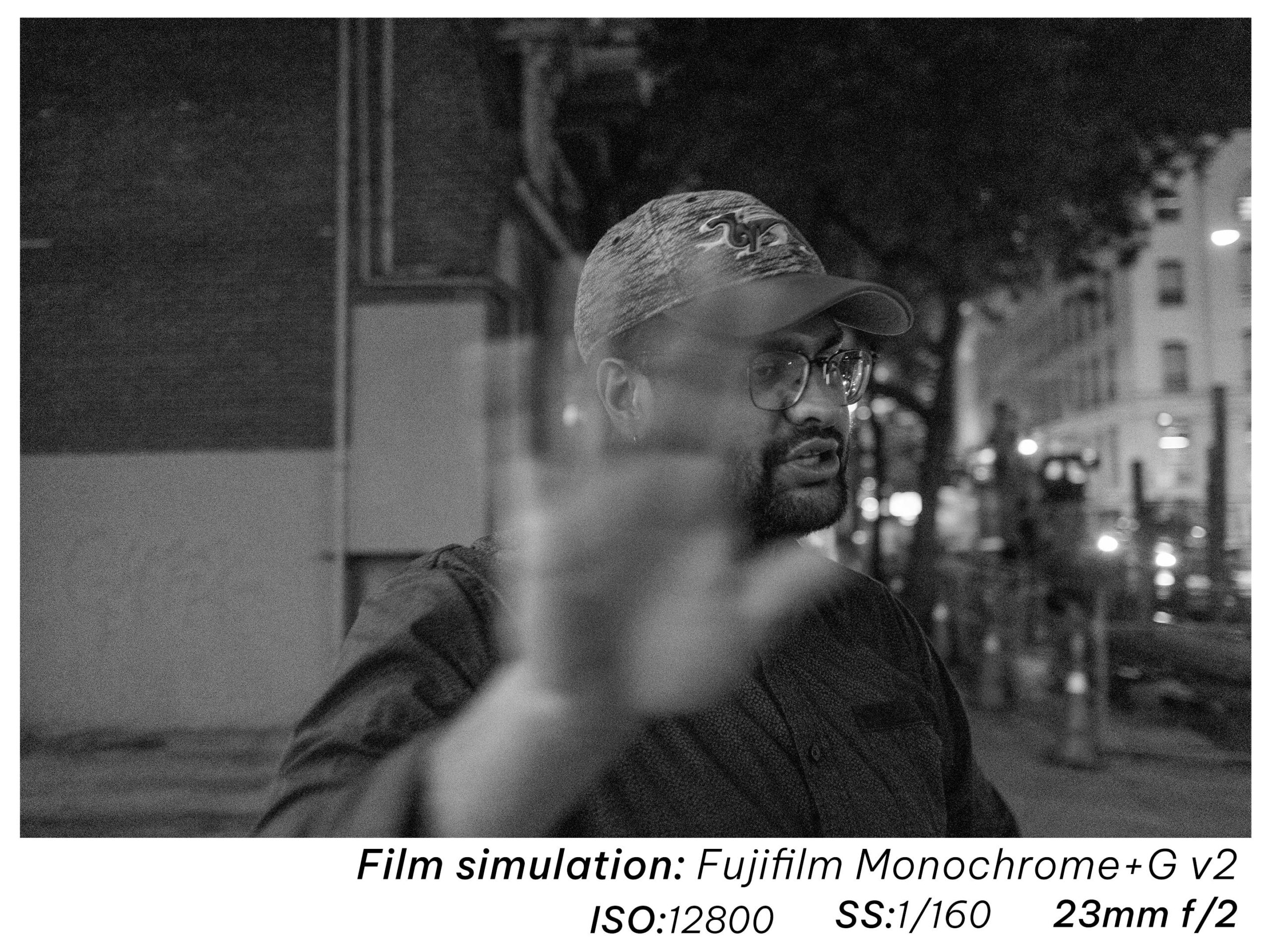
You can find full-resolution X100V images here.
The company’s excellent film simulations and colour profiles are some of the most exciting elements of shooting with any Fujifilm camera. While I still use RAW files for work, I find myself gravitating to the camera matching feature in Adobe products to apply the classic Fujifilm look since the colours and tones are often so rich.
I’ve been using Astia mainly for the past year, but Classic Chrome has started stealing the show lately. All the Product shots of the X100V in this article are edited Classic Chrome images. As a side note, I did shoot some product shots with the X100V, and while it was a fun challenge, I wouldn’t want to limit my professional work to 23mm.

Photos from this camera are mostly a blessing, as I mentioned above, but there is one area where a phone camera wins out: immediacy. Sure, getting files off the X100V is faster than waiting for film to develop, but it’s still a lot slower than a phone. This means that my photos will often build up in a folder on my desktop for a week or so before I’d finally sit down and edit them.
I could be shooting in just Fuji Jpegs, but I’d likely be editing those too. I like editing and find it fun, but be aware that it becomes a much more time-consuming part of photography once you step up to a camera like the X100V.
When I complain about this, people often tell me to use the Fujifilm app, but it’s never quite worked for me, which has been a huge bummer since I use Fujifilm cameras in all my professional work (X-T3/X-S10).
This slideshow requires JavaScript.
You can find full-resolution X100V images here.
A portable powerhouse
Regardless of the pros and cons, I still love this little camera. Having a real camera with me at all times made me a better photographer, and I had more fun shooting than I’ve had in a while. It’s an inspiring tool.
However, I won’t be getting one since, in Canada, the Fujifilm’s X100V’s costs roughly $1,700 right now, and I need a camera that can do both video and photos. Maybe if I had a few extra grand laying around (I wish, right?), then I could justify this camera, but for me and I think most other people, it’s a hard sell since it costs so much and features a fixed lens.
It can technically record 4k/30fps video, but it’s somewhat limited, and its compact size means the X100V overheats rather quickly. The video looks great, but it’s more for capturing small memories and not something I’d want to use full-time.
Still, if you want a photography tool, I don’t think you should worry about the fixed lens much since you can do so much with it. Plus, the small size makes it easier to carry around, and at the end of the day, the best camera is the one you have with you.
MobileSyrup may earn a commission from purchases made via our links, which helps fund the journalism we provide free on our website. These links do not influence our editorial content. Support us here.

